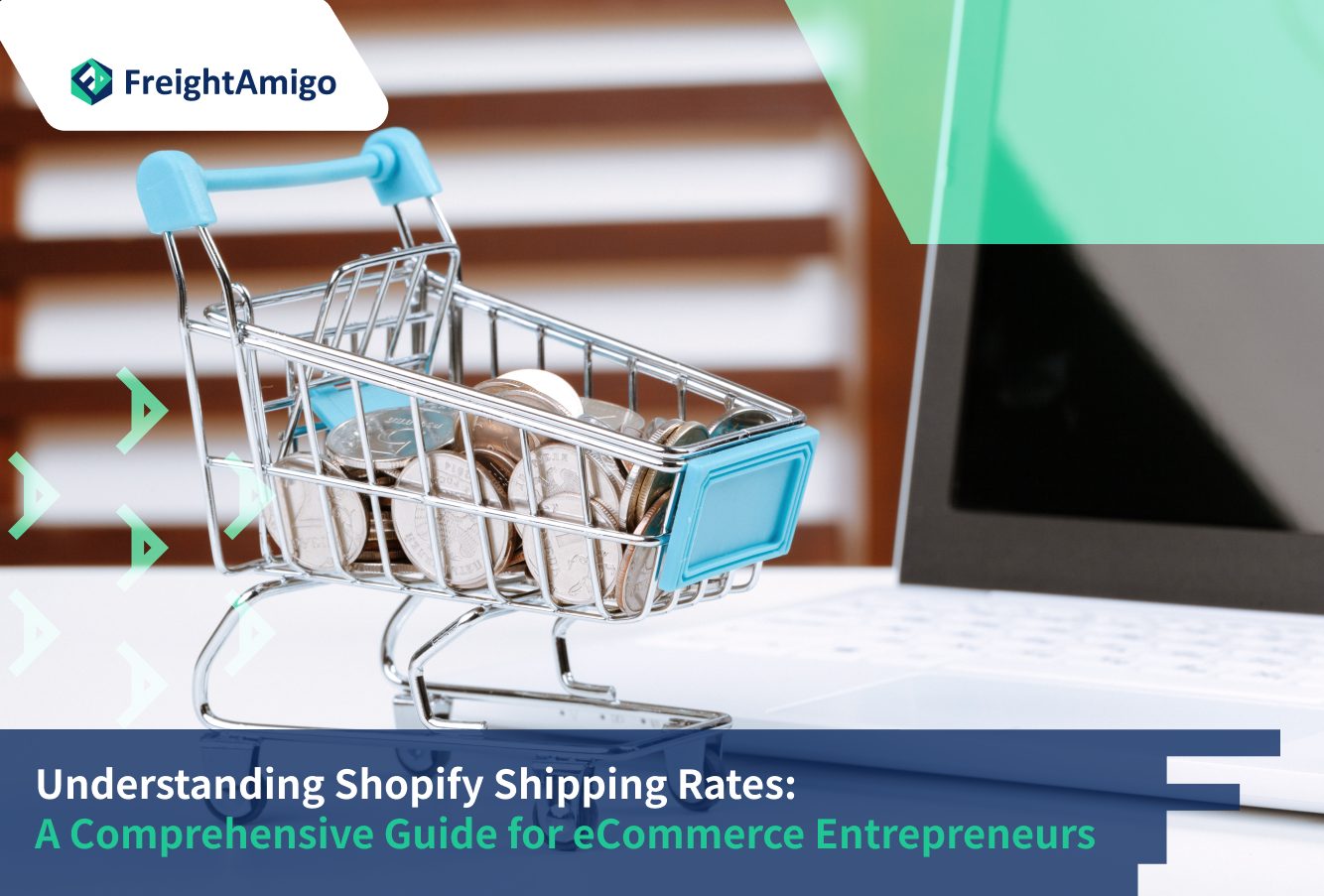Shipping rates play a crucial role in the success of your eCommerce business. They not only impact your customers’ purchasing decisions but also affect your profit margins. Therefore, understanding how to set up and manage shipping rates effectively is essential for any eCommerce entrepreneur.
In this comprehensive guide, we will explore everything you need to know about Shopify shipping rates. From different types of rates to their benefits and limitations, we will provide you with valuable insights to help you make informed decisions for your online store.
Latest update on 7 February, 2024 by Aurora Park– Marketing Analyst at FreightAmigo
Want to compare the best Express, Air Freight, Sea Freight, Rail Freight & Trucking rates so as to have better control on cost?
Introduction to Shopify Shipping Rates
Shipping rates are the additional charges you apply to your customers’ orders for shipping their products. These rates are added to the total cost of the products at the checkout stage. Shopify offers various options for setting up freight rates based on your business requirements.
Flat Shipping Rates
Flat shipping rates are specific amounts you charge customers based on their orders. They provide you with control over the exact amount customers are charged at checkout. There are three types of flat shipping rates available on Shopify:
General Rates
General rates offer a flat rate shipping cost regardless of the contents of the customer’s cart. For example, you can provide customers with the option to choose between regular shipping for $5 or expedited shipping for $15.
Priced-based Rates
Priced-based rates allow you to set minimum and maximum cart values for your flat shipping rates. For instance, you can charge a flat shipping rate of $4 for orders below $50 and $10 for orders over $50. This enables you to offer different rates based on the value of the customer’s order.
Weight-based Rates
Weight-based rates let you set minimum and maximum weights that qualify an order for your flat shipping rates. For example, you can charge $7 for orders under 5 kg and $15 for orders over 5 kg. This allows you to offer different rates based on the weight of the customer’s order.
Free Shipping Rates
Free shipping rates can be created by setting the shipping cost to $0. You can offer free shipping on all orders or set specific conditions, such as free shipping on orders over $100. Providing free shipping can be a powerful incentive to attract customers and increase sales.
Calculated Shipping Rates
Calculated shipping rates are shipping costs provided by shipping carriers or apps integrated with your Shopify store. When customers reach the checkout, their cart information is sent to the shipping carrier or app, which calculates the shipping cost based on factors like shipping origin, destination, weight, and dimensions of the shipment box.
Calculated Shipping Rates from Shipping Carriers
Depending on your Shopify subscription plan and location, you can add specific shipping carriers directly to your shipping settings. These carriers use various factors to determine the shipping cost, such as weight, value, dimensions, and speed of delivery. For example, if your customer is from Washington D.C., USA, and your store is in Ottawa, Canada, Canada Post can calculate the shipping options based on the order criteria.
Calculated Shipping Rates from Apps
Apps can also provide calculated rates if the carrier you use integrates with Shopify or if you need a more advanced shipping setup. You can explore the Shopify App Store to find available shipping apps that offer calculated rates.
Local Delivery Method Rates
If you offer local delivery or pickup options for customers near your business, Shopify allows you to set up local delivery method rates.
Local Delivery
You can create a local delivery method for customers to choose at checkout. Specify the delivery fee and minimum order amount. You can also set the availability of your delivery by listing postal codes or selecting a radius around your business location.
Local Pickup
Offering local pickup allows customers to come to your business and collect their orders in person. This can help them save on shipping costs and create a more branded experience. Provide pickup instructions and inform customers when their orders will be available for pickup.
Customer Experience Choosing Shipping Rates
The shipping settings you choose directly impact what your customers see at the checkout. After setting up your shipping rates, it’s important to place a test order to ensure that the options are correctly displayed for customers. Each customer will only see the shipping options applicable to their order, with the cheapest option shown as the default.
Checking out with PayPal Express
If your customers choose to check out using PayPal Express, they will be taken to the PayPal page to enter their credit card information and billing address. After this step, the available shipping methods will be displayed. To ensure a seamless checkout experience, it’s recommended to inform customers about this intermediate step by creating an information page and linking it to your store’s footer.
Conclusion
Understanding Shopify shipping rates is crucial for eCommerce entrepreneurs to optimize their shipping strategies and enhance customer satisfaction. By leveraging different types of rates and considering factors like weight, value, and location, you can provide accurate and cost-effective shipping options for your customers. Take advantage of Shopify’s versatile shipping settings to create a seamless checkout experience and drive the success of your online store.
Remember, the key to effective shipping rate management is continuous evaluation and adjustment based on customer feedback and market trends. Regularly review your shipping rates to ensure they align with your business goals and meet the changing needs of your customers.
Learn More About How FreightAmigo Can Revolutionize Your Online Store Logistics By Visiting Our Shopify App Page.
Read More:
E-commerce Dropshipping | Starting Your Own Online Store | FreightAmigo
Purchase Order Systems | Simplifying Management | FreightAmigo
PayPal Shipping | Revolutionizing eCommerce Shipping | FreightAmigo
If you have any inquiries on logistics/supply chain, feel free to contact FreightAmigo now:
Chat with us online | Hotline: +852 28121686 | WhatsApp: +852 27467829



